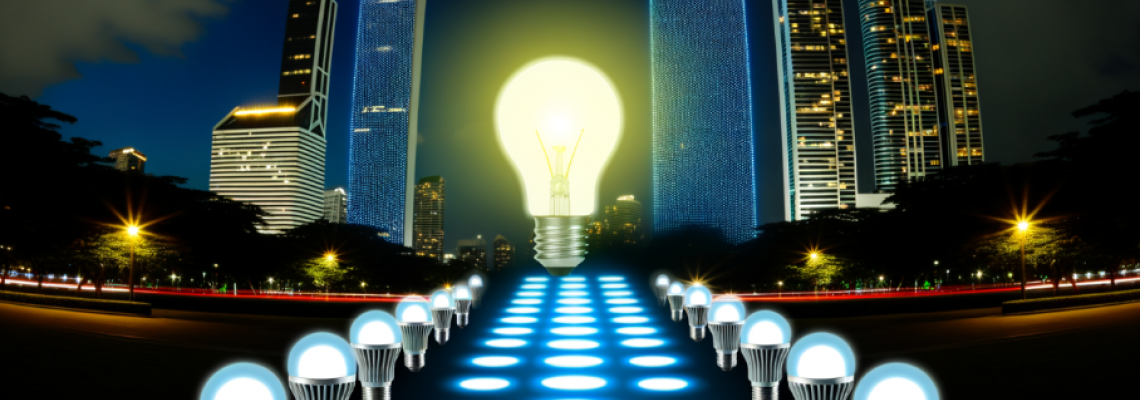
Lighting has long been one of the largest contributors to global energy consumption. For decades, inefficient incandescent and high-intensity discharge (HID) lamps dominated the landscape, wasting enormous amounts of electricity in homes, businesses, and agriculture. But in recent years, LED (Light-Emitting Diode) technology has emerged as a game-changer, delivering higher efficiency, longer lifespans, and reduced carbon emissions.
Governments worldwide have recognized this potential, and through a combination of incentives, subsidies, and regulations, they are accelerating the shift toward LED adoption. This transformation isn’t just about saving energy; it’s about driving sustainability, lowering costs, and meeting global climate goals.
In this article, we’ll explore the role of government incentives, the regulations shaping LED adoption, and what the future looks like for this fast-growing sector.
Why Governments Are Pushing LED Adoption
The move toward LEDs isn’t just a technological upgrade; it’s a strategic necessity. Traditional lighting technologies like incandescent bulbs, halogen lamps, and even compact fluorescent lights (CFLs) consume significantly more energy and have shorter lifespans compared to LEDs.
Here are the main reasons governments are prioritizing LEDs:
Energy Efficiency: LEDs use up to 80% less energy than traditional bulbs, reducing pressure on national power grids.
Climate Goals: Lighting accounts for nearly 15% of global electricity consumption. Transitioning to LEDs can slash greenhouse gas emissions.
Economic Savings: Reduced energy consumption lowers household and business utility bills.
Public Health & Safety: LEDs provide better quality light, reduce heat emissions, and eliminate hazardous materials like mercury found in CFLs.
Types of Government Incentives for LED Adoption
To accelerate this transition, governments around the world are offering a variety of financial and policy-based incentives. Let’s break them down:
1. Rebates & Subsidies
Many governments offer direct rebates to reduce the upfront cost of LED purchases. These programs are especially impactful in agriculture, commercial buildings, and residential projects.
Example (U.S.): Utilities and states provide rebates that can cover 20–50% of LED installation costs.
2. Tax Credits & Deductions
Tax incentives encourage businesses to invest in energy-efficient lighting by allowing them to deduct part of the cost.
Example (India): Energy-efficient lighting projects may qualify for accelerated depreciation benefits under green energy policies.
3. Low-Interest Loans & Grants
Some governments provide financing to make LED adoption more accessible, especially for small businesses and farmers.
Example (EU): The European Investment Bank funds green projects that include large-scale LED retrofits.
4. Utility-Sponsored Programs
Local energy providers often partner with governments to offer instant discounts or bill credits when customers switch to LEDs.
5. Bulk Procurement & Distribution Programs
Some developing nations adopt large-scale LED distribution programs to drive mass adoption.
Example (India’s UJALA Scheme): Distributed over 360 million LED bulbs, dramatically reducing household electricity bills.
Key Regulations Driving LED Adoption
In addition to financial incentives, regulations and mandates are crucial in phasing out inefficient lighting technologies.
1. Phase-Out of Incandescent & Halogen Bulbs
European Union: Banned halogen bulbs in 2018.
United States: New standards in 2023 effectively ended incandescent bulb sales.
China & Brazil: Rolled out gradual bans to eliminate inefficient lighting.
2. Energy Efficiency Standards
Governments set minimum efficiency requirements that lighting products must meet.
Example: The ENERGY STAR certification in the U.S. ensures LEDs meet strict energy and performance criteria.
3. Building Codes & Green Certifications
Green building standards such as LEED, BREEAM, and IGBC mandate or strongly encourage the use of LED lighting.
4. Agricultural & Horticultural Guidelines
In controlled-environment farming, governments provide compliance frameworks for LED grow lights that ensure energy efficiency while supporting crop yields.
5. Circular Economy Regulations
Some governments require manufacturers to design LEDs that are recyclable or repairable, minimizing electronic waste.
Global Examples of LED Regulations & Incentives
United States
Federal tax deductions under the EPAct (Energy Policy Act).
State-level rebates, such as California’s aggressive incentives for LED retrofits.
DOE (Department of Energy) programs promoting LED adoption across public buildings.
European Union
Strict Ecodesign Directives requiring energy efficiency labeling.
Phase-out of halogen and incandescent bulbs.
The EU Green Deal emphasizes LED lighting in sustainable infrastructure projects.
India
The UJALA Program distributed subsidized LEDs to millions of households.
Government initiatives to replace streetlights with LEDs are saving billions in energy costs annually.
China
Major subsidies for LED manufacturing are helping China dominate the global LED market.
Phased bans on inefficient lamps since 2012.
Australia
Rebates for businesses upgrading to LEDs.
Minimum energy performance standards (MEPS) to ensure compliance.
Challenges in LED Adoption
While incentives and regulations have fueled growth, challenges remain:
High Upfront Costs (Without Incentives): Although prices have dropped significantly, LEDs can still cost more than traditional bulbs initially.
Quality Variations: Poor-quality LEDs entering markets can damage consumer trust.
Awareness Gap: Many consumers and small businesses remain unaware of available rebates and tax credits.
Disposal & Recycling: End-of-life management of LEDs needs stronger regulatory support.
The Future of LED Incentives & Regulations
Looking ahead, we can expect governments to expand incentives and tighten regulations as part of global net-zero commitments. Key trends include:
Integration with Smart Cities – LEDs paired with IoT sensors will be incentivized for urban infrastructure.
Focus on Agriculture – Policies encouraging efficient LED grow lights in greenhouses and vertical farms.
Global Harmonization – Common international standards for energy-efficient lighting.
Circular Economy Push – Regulations around recycling and eco-friendly manufacturing.
Performance-Based Incentives – Rewarding adoption not just for energy savings but also for CO₂ reductions.
Conclusion
The shift to LED lighting is more than a technological upgrade; it’s a global sustainability strategy. Through rebates, subsidies, tax credits, and strict regulations, governments are making LEDs the clear choice for homes, businesses, and agriculture. While challenges remain, the long-term benefits in cost savings, energy efficiency, and climate impact are undeniable.
As incentives expand and regulations tighten, LEDs are no longer just an option; they are the future of lighting. For growers, businesses, and households, embracing this change now means not just keeping up with regulations but staying ahead in sustainability and efficiency.

Leave a Comment